
Five deaths in the US have been linked to vaping as health officials continue to grapple with the dangers of e-cigarette use and the exact cause of the deaths. All five died after developing a severe lung illness that is believed to be linked to vaping. The exact cause of the deaths and the dangers of vaping still remain unclear but are being investigated on both the federal and state level.
More than 450 possible cases of respiratory illnesses have been reported in 33 states after use of e-cigarette products, according to the Centers for Disease Control and Prevention. The average age of those with the illness is 19, which is not surprising considering of the almost 10 million vapers in the US, nearly half of those are under 35, with 18-24-year-olds the most regular users.
Those who have suffered from the lung illness reported experiencing coughing, chest pain or shortness of breath before their health deteriorated to the point of respiratory failure and they needed to be hospitalized, according to the Centers for Disease Control and Prevention. Respiratory failure is where your body either can’t break down oxygen, produce carbon dioxide, or both. The result is that your lungs stop working and breathing becomes difficult. Other reported symptoms include nausea, vomiting, diarrhea, fatigue, fever and weight loss. Many victims have ended up with acute respiratory distress syndrome, a life-threatening condition in which fluid builds up in the lungs and prevents the oxygen people’s bodies need to function from circulating in the bloodstream.
Those affected used a number of different devices from vaporizers to smaller e-cigarettes and a variety of different brands of liquids and cartridges. Health officials recently said many cases involved products that contained THC, the mind-altering substance in marijuana. The FDA has now collected over 120 samples to test for different chemicals, including nicotine, cannabinoids, additives and pesticides.
They also recently identified a common contaminant in some of the cannabis products used by patients across the country — an oil derived from vitamin E. It remains unclear whether this is the cause or one of the causes of the illnesses. The Centers for Disease Control and Prevention issued a statement that advised against using electronic cigarettes while it investigates the issue. The agency also said people should stop buying vaporizers, cartridges and liquids off the street or modifying vaping products bought legally.
New York Health officials have focusing their investigation on Vitamin E acetate after they found high levels of it in nearly all of the cannabis-containing vapes tested. At least one vape containing both cannabis and vitamin E has been linked to every patient who submitted products for testing, the New York health department said. Vitamin E isn’t known to be harmful if ingested as a vitamin supplement, but it could be dangerous if inhaled because of its “oil-like” properties. It has not been approved as an additive for New York’s medical marijuana program.
Federal health officials are warning that vitamin E is likely only one piece of the puzzle. The CDC is running its own tests on more than 100 samples for vitamin E, pesticides, opioids, poisons and other toxins. “No one substance or compound, including vitamin E acetate, has been identified in all the samples tested,” Zeller said. “The samples we’re continuing to evaluate show a mix of results.”
Read more
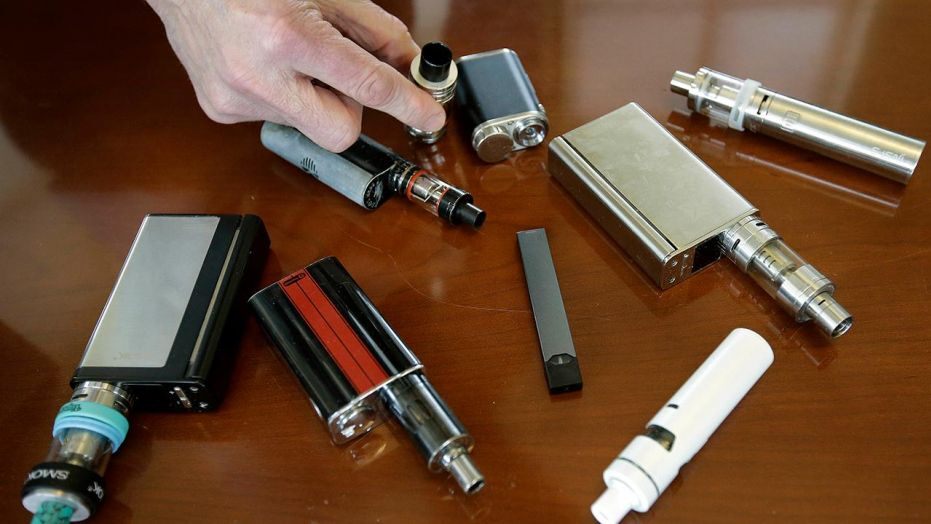 A patient in Illinois is believed to be the first death linked to vaping. Health officials said the patient died after contracting a severe respiratory illness, but did not give details about what the patient was vaping or which device was used. They did not provide details about the patient’s identity, saying only that the person was an adult who had vaped recently and then succumbed to a severe respiratory illness.
A patient in Illinois is believed to be the first death linked to vaping. Health officials said the patient died after contracting a severe respiratory illness, but did not give details about what the patient was vaping or which device was used. They did not provide details about the patient’s identity, saying only that the person was an adult who had vaped recently and then succumbed to a severe respiratory illness.
This comes as the Centers for Disease Control and Prevention has identified nearly 200 possible cases of lung disease linked to vaping in at least 22 states, including 22 cases in Illinois. The Illinois patients range in age from 17 to 38. Illinois state officials are working with local health departments to investigate another 12 individuals. Officials said earlier this week that many patients, most of whom were adolescents or young adults, had described difficulty breathing, chest pain, vomiting and fatigue. The most seriously ill patients have had extensive lung damage that required treatment with oxygen and days on a ventilator. Some are expected to have permanent lung damage.
Many patients have acknowledged vaping of tetrahydrocannabinol, or (T.H.C.), the high-inducing chemical in marijuana, according to statements from federal and state health agencies. Officials still don’t know whether the ailments have been caused by marijuana-type products, e-cigarettes, or some type of street concoction that was vaped, or whether a contaminant or defective device may have been involved.
The F.D.A. does not regulate what ingredients are used in vaping devices. The e-cigarette market has broadened to counterfeiters and a range of devices that can be packed with different substances, including marijuana, but also various flavors and concoctions that may be mixed inexpertly. Some speculate that people are emptying out commercial nicotine pods and filling them up with a combination of T.H.C. oil and other chemicals. Cannabis liquids and oils have become more widely available online and in many stores. The ingredients may not be disclosed at all so unsuspecting consumers may be exposed to a cocktail of hazardous chemicals.
State health departments are handling most investigations into the respiratory illnesses. So far, public health officials have declined to say if they are seeing a pattern that would make clear whether the problematic products are made by mass-market companies or counterfeiters, or whether the inhalants involved are standard to many vaping products or made or mixed by consumers themselves. Even though cases appear similar, it is not clear whether all these cases have a common cause or whether they are different diseases with similar symptoms.
Dozens of young people with an unidentified lung illness have been hospitalized around the country in recent weeks. It’s unclear if the condition is linked to the vaping devices or what the patients were smoking before they became sick. A recent study says that e-cigarettes impact people’s blood vessels after a single use. Officials said they don’t know why a surge of illnesses is surfacing now since various forms of the battery-powered e-cigarette devices have existed for more than a decade. E-cigarettes have grown in popularity over the past decade despite little research on their long-term effects. Millions of Americans use e-cigarettes, with the greatest use among young adults. Lat year, more than 3.6 million U.S. middle and high school students said they had used e-cigarettes in the past 30 days, according to the CDC.
Read more

Oklahoma Judge Thad Balkman has found that Johnson & Johnson helped fuel the state’s opioid crisis, and ordered the pharma giant to pay over half a billion dollars — $572 million. It’s the first major ruling against a drug company as part of the opioid epidemic, which has led to hundreds of thousands of overdose deaths around the country. The decision is the first to hold a drugmaker culpable for the fallout of the liberal opioid dispensing that began in the late 1990s which led to a nationwide epidemic of overdose deaths and addiction.
More than 400,000 people in the US have died of overdoses from painkillers, heroin and illegal fentanyl since 1999. In Oklahoma, more than 6,000 people have died of painkiller overdoses since 2000, the state charged in court papers, as the number of opioid prescriptions dispensed by pharmacies reached 479 every hour in 2017. Johnson & Johnson’s products — a prescription opioid pill and a fentanyl skin patch sold by its subsidiary, Janssen Pharmaceuticals, were a small part of the painkillers consumed in Oklahoma. Two other companies it owned had grown, processed and supplied 60 percent of the ingredients in painkillers sold by most drug companies in the US.
The decision has been hailed as a victory but the damages are much lower than the $17 billion Oklahoma had sought in the case. Balkman did not give the state everything it sought, the state attorneys asked for $17.5 billion over 30 years for treatment, emergency care, law enforcement, social services and other addiction-related needs. Judge Balkman concluded it would cost $572 million to address the crisis in the first year based on the state’s plan. He said the state did not provide “sufficient evidence” of the time and money needed to respond after that.
There are about 2,000 lawsuits in 40 other states against opioid manufacturers and distributors that are pending around the country. A massive federal lawsuit brought by almost 2,000 cities, counties and Native American tribes is scheduled to begin in October. The ruling in the first state case to go to trial could influence both sides’ strategies in the months and years to come.
Moments after the judge ruled, Johnson & Johnson, which has denied wrongdoing, said it would appeal. Company attorney Sabrina Strong said at a news conference, “We are disappointed and disagree with the judge’s decision. We believe it is flawed. We have sympathy for those who suffer from opioid use disorder but Johnson & Johnson did not cause the opioid abuse crisis here in Oklahoma or anywhere in this country.”
Oklahoma settled in March with Purdue Pharma, manufacturer of OxyContin, accepting $270 million from the company and its owners, the Sackler family, who were not named as defendants in the lawsuit. Most of that will go to a treatment and research center at Oklahoma State University, although the federal government is seeking a portion of the money. In May, two days before the trial began, the state settled with Teva Pharmaceuticals, an Israeli-based manufacturer of generic drugs, for $85 million. The Sackler family has also offered to settle the more than 2,000 lawsuits against them for their role in the opioid crisis for $10 billion to $12 billion which includes $3 billion from the Sackler family fortune. The deal was reportedly discussed last week by Purdue’s lawyers and includes a plan for Purdue to declare Chapter 11 bankruptcy before restructuring into a for-profit “public benefit trust” that would allegedly serve the many plaintiffs suing the company. The Sackler family would also relinquish ownership of Purdue under the deal.
Read more

A Northern California gunman, 19-year-old Santino William Legan, killed three people and wounded at least 19 others at the annual Gilroy Garlic Festival. Legan died at the scene of a self-inflicted gunshot wound while exchanging fire with police. Authorities say they are still determining a motive for the attack, but the gunman’s social media activity shows him promoting a manifesto on white supremacy just moments before the rampage. He also wrote in a post Sunday, “Why overcrowd towns and pave more open space to make room for hordes of mestizos and Silicon Valley white twats?”
Authorities say the gunman used an assault rifle that was purchased legally in Nevada. The AK-47-style weapon could not have been legally purchased in his home state of California because of stricter gun regulations. Six-year-old Stephen Romero was the youngest victim of the shooting. Another child, 13-year-old Keyla Salazar, and 25-year-old student Trevor Irby also lost their lives in the massacre. At least 19 victims were treated at area hospitals, including some who were treated but not admitted. The patients ranged in age from 12 to 69; 11 had gunshot injuries and eight had other injuries.
Police say Legan entered the festival by cutting through a wire fence along Uvas Creek, thus evading security screening. He began shooting at random with an assault-style rifle he bought in Nevada weeks earlier, authorities said. Police believe he acted alone. Officers at the scene reportedly engaged the shooter within a minute of the start of the shooting. The police chief credited the fast response to a heavy police presence with “many, many officers in the park”. The three officers who fired their handguns have been hailed heroes for engaging the shooter so quickly. All three have been placed on administrative leave.
Legan appeared to post a photograph from the festival on his Instagram account soon before the shooting, with captions expressing his disdain for the event. “Ayyy garlic festival time,” he wrote beneath a picture of people walking through the festival grounds. “Come get wasted on overpriced s***.” Another photograph posted on Sunday showed a sign warning of a high danger of forest fires. Its caption urged people to read “Might is Right,” a racist and sexist treatise written in the 19th century.
“Why overcrowd towns and pave more open space to make room for hordes of mestizos and Silicon Valley white twats?” the caption said, referring to people of mixed race. The account was only a few days old, and was deactivated a day after the shooting.
The city’s Police Chief Scot Smithee identified the officers as Eric Cryar, a 23-year law enforcement veteran; Hugo Del Moral, a 17-year veteran and Robert Basuino, a 13-year veteran of the Gilroy department. Smithee described his officers as incredibly humble. “I think they’re heroes. I don’t think they view themselves that way,” Smithee said. “I think they view themselves that they were just doing their job. And I don’t think they’re particularly excited about being in the limelight, but I certainly think that they deserve recognition for what they did.”
Police and FBI agents were trying to determine a motive for the shooting. “As we look at the injuries and the victims that are out there, it doesn’t seem clear that he was targeting any particular group,” said John Bennett, the special agent in charge of the FBI’s San Francisco office.
Read more

Capital One says a hacker exposed the personal data of its customers, including about 140,000 Social Security numbers and tens of thousands of bank account numbers. Tens of millions of credit card applications were also stolen. The hack comes a week after the settlement reached between Equifax and the Federal Trade Commission concerning a hack in 2017 that affected 147 million customers.
The FBI arrested Seattle software engineer Paige Thompson over the breach and charged her with computer fraud and abuse. Thompson’s online activity led investigators to her, as she allegedly boasted about the hack on social networking sites. Thompson was allegedly able to find an opening in Capital One’s systems and exploit a weakness in some misconfigured networks, according to a Wall Street Journal analysis of hundreds of Ms. Thompson’s online messages and interviews with people familiar with the investigation.
Security professionals for years have warned about that gap, which the messages and interviews suggest she used to trick a system in the cloud to uncover the sensitive credentials she needed to access the vast number of customer records. Once she found the Capital One data, she was able to download it, the people familiar with the investigation said. All, apparently, without triggering any alerts.
In online messages in accounts that prosecutors have said were Thompson’s, she claimed to have also applied those techniques to access a trove of online data from other organizations. The messages were posted in online forums. Her lawyer didn’t respond to requests for comment and she remains in custody until a bail hearing scheduled for Aug. 15.
The data breach to Capital One servers on March 22nd and 23rd exposed the personal information of nearly 106 million of the bank’s customers and applicants. The breach resulted in the hacker gaining access to personal information related to credit card applications from 2005 to early 2019 for consumers, applicants and small businesses. Capital One detected the breach on July 19. Among the personal data exposed were names, addresses, dates of birth, credit scores, transaction data, Social Security numbers and linked bank account numbers.
About 140,000 Social Security numbers and 80,000 linked bank account numbers were exposed, Capital One said. And for Canadian credit card customers and applicants, approximately 1 million Social Insurance Numbers. Capital One said, however, that no credit card account numbers or login credentials were revealed in the hack. Capital One said it will notify customers and credit card applicants whose data was exposed in the breach.
Read more
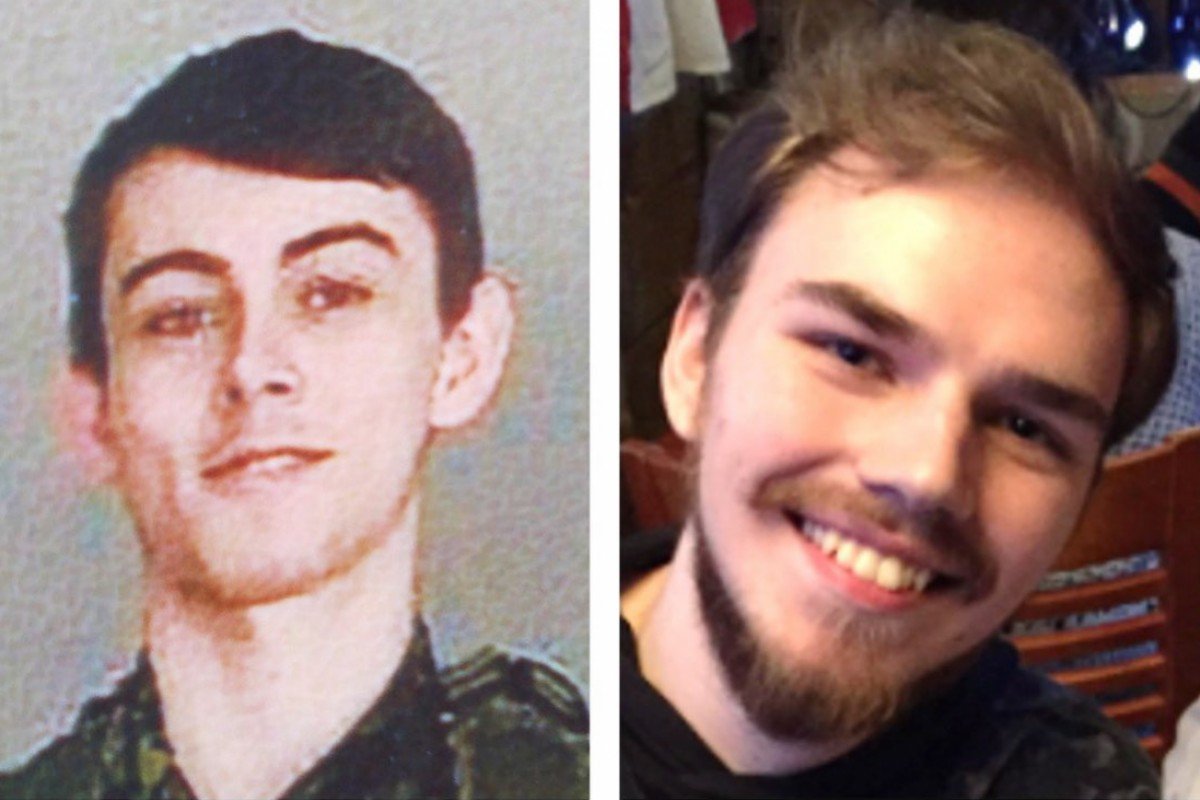
Two British Columbia teenagers previously considered to be missing are now suspects in the murder of a young couple and the death of an unidentified man in northern B.C. Kam McLeod, 19, and Bryer Schmegelsky, 18, were last spotted in northern Saskatchewan and police believe they are the run. McLeod is described as 6’4”, approximately 169 pounds, with dark brown hair and facial hair and brown eyes. Schmegelsky is described as 6’4”, approximately 169 pounds, with sandy brown hair. The police issued a warning to the public not to approach McLeod and Schmegelsky, saying they are considered dangerous.
Police initially investigated the disappearance of McLeod and Schmegelsky as missing cases. But they say there’s now evidence to consider them suspects in the three murders. Australian Lucas Fowler, 23, and his American girlfriend Chynna Deese, 24, a young couple on a 3 week road trip through Canada to Alaska were found shot dead on the side of a road in a remote section of the Alaska Highway. Police believe they were killed sometime between July 14 and July 15.
Deese’s brother said that the couple met while his sister was working at a hostel in Croatia. He called their relationship “the most perfect love story.” He said Deese and Fowler were both experienced travelers and took precautions while visiting other countries. “For something like that to happen, it must have really been something because these are two people that have traveled around the world and were not, were not people to get caught off guard.”
Just days later, the burned-out truck belonging to the two teens was found on Highway 37 near Dease Lake in northern B.C. The body of an unknown man was found nearby. Police released a sketch of the unidentified deceased man in the hopes the public would be able to help identify him. He’s been described as between the age of 50 and 60 with a heavy build, grey hair, and a beard. The man would have been between 5’8” and 5’10” tall.
Another burned-out vehicle was found abandoned near Bird. It was not clear if this vehicle was linked to McLeod and Schmegelsky in any way but police believe the two may be switching out vehicles. Port Alberni’s Mayor says the small town where the teens’ are from has been greatly impacted by the developing situation. “We are a small community, and whether you know the boys or the community, everyone is connected in one way or another,” Mayor Sharie Minions. “It’s definitely challenging, it has far reaching impacts for sure.”
McLeod and Schmegelsky are described as lifelong friends who were former employees at a local Walmart. They were believed to be traveling while looking for work but had dropped out of contact for several days before the first bodies were found. The police named them as suspects in the murders during a press conference but did not release any additional information about McLeod or Schmegelsky, citing the ongoing nature of the investigations.
Former RCMP Deputy Commissioner Peter German said McLeod and Schmegelsky’s fast progression from missing persons to suspects shows the impressive speed of the ongoing investigation. “I don’t think anyone would have expected this turn of events but I think that says something that the police are ahead of the game on this one.” The former commissioner said investigators would have reasonable suspicion and enough evidence to publically name the teens as suspects. “They’ve obviously got forensics or witness identification of some sort that point to these two individuals. That’s not to assume guilt at all,” he said.
Read more
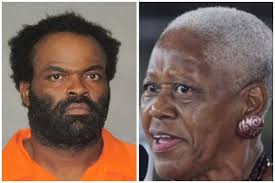
Police in Louisiana are releasing new details about the man accused of killing popular Baton Rouge civil rights activist Sadie Roberts-Joseph. Ronn Jermaine Bell, 38, was arrested on one charge of first degree murder. According to police, Bell was her tenant and owed her about $1,200 in rent. Both circumstantial and physical evidence led to his arrest after her body was found in the trunk of her car outside a vacant home about 3 miles away from her home last week. According to the arrest report, Bell admitted to being in the area where her car was abandoned, surveillance cameras place him in the area and his DNA was found on her body.
The death of Roberts-Joseph shocked and saddened the community and sparked a swift and coordinated investigation. Baton Rouge police credited both the community and detectives in helping find Roberts-Joseph’s accused killer. Police say Bell suffocated the 75-year-old on Friday and then placed her body in the trunk of her own car. According to the East Baton Rouge district attorney, Bell was previously arrested after being accused of raping an 8-year-old girl in 2004. He pleaded guilty to sexual battery and served seven years in prison. He was not on probation or parole but was under indefinite supervision as a sex offender. Officials say they do not believe Roberts-Joseph knew of Bell’s sex offender status.
Bell was already in jail when he was identified as a suspect in Roberts-Joseph’s murder, for violating sex offender registration requirements. Bell was booked into jail Monday for not paying the $60 annual registration fee required of all sex offenders. He was then rebooked on Tuesday on the murder charges. Bell told investigators that the activist had allowed him to stay in the home he was renting as long as he paid her something. However, in the affidavit, investigators noted that Roberts-Joseph’s own notes suggested that she ” intended to contact the defendant on the day of her murder … in regards to the back payments.”
Roberts-Joseph was considered a local icon in Baton Rouge, where she founded the Odell S. Williams Now and Then African American Museum and hosted the annual celebration of Juneteenth, which she fought to have recognized as a state and national holiday. She also started the Community Against Drugs and Violence (CADAV), a nonprofit to empower people to combat drugs and street violence in order to create a safer environment for children.
Hundreds gathered in the Louisiana heat at the African American history museum Sadie Roberts-Joseph founded nearly two decades ago to mourn the loss. Baton Rouge Mayor-President Sharon Weston Broome said “Having known her for decades, she was one of the standout matriarchs of Baton Rouge. She was a part of the fabric of Baton Rouge and we will make her legacy a priority in Baton Rouge because of what she gave to so many here.”
Roberts-Joseph’s daughter, Angela Machen, said that although this experience has been heartbreaking and “heinous,” there has been solace in seeing the community unite to solve her mother’s killing and honor who she was as a person. “All my mother ever wanted was for this community to come together,” she said. “It’s ironic that this happened in death. What she wanted to happen in life came to fruition in death. We will see to it that her legacy continues.”
Read more
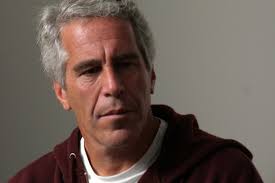
Federal prosecutors charged financier Jeffrey Epstein with one count of sex trafficking of a minor and one count of conspiracy to commit sex trafficking on July 8 2019. Epstein was first arrested at Teterboro Airport in New Jersey on July 6, after arriving back in the United States from France. Federal prosecutors also searched his New York City home over the weekend and news outlets report that during the search of his townhouse, investigators seized photographs of nude underage girls, federal prosecutors said. Epstein has pleaded not guilty on both charges. If convicted of the charges, Epstein faces a maximum of 45 years.
A federal judge in New York has denied bail to Jeffrey Epstein, declaring him a danger to the community and a significant flight risk. U.S. District Judge Richard Berman pointed to a raid by investigators on Epstein’s mansion earlier this month that found “piles of cash,” stashes of diamonds and an expired passport with Epstein’s photo next to someone else’s name listed under a Saudi address. Prosecutors accused the serial child sex abuser of possible witness tampering, saying he made payments totaling $350,000 to two people he feared could testify against him in court.
Court documents say “over the course of many years, Jeffrey Epstein, the defendant, sexually exploited and abused dozens of minor girls at his homes in Manhattan, New York, and Palm Beach, Florida, among other locations.” It also notes that “in order to maintain and increase his supply of victims, Epstein also paid some of his victims to recruit additional girls to be similarly abused.” The prosecution alleges that he sexually assaulted girls as young as 14 years old.
Epstein started his career in New York City as a math teacher at the Dalton School, but went to work at the investment bank Bear Stearns in the 1970s before founding his own firm, J. Epstein and Co., in 1982. According to Vox, he specifically marketed his services to “those with assets worth more than $1 billion,” and operates his company out of the U.S. Virgin Islands for tax reasons. Throughout the years, Epstein belonged to a high society social circle that included politicians and elitists.
Epstein’s bust comes months after a federal judge ruled his 2007 non-prosecution agreement —violated federal law by keeping Epstein’s victims in the dark. Under the sweetheart deal, Epstein dodged federal charges that might have sent him to prison for life. He instead pleaded guilty in 2008 to felony state charge of solicitation of prostitution involving a minor and sentenced to 18 months in jail. He served 13 months in a private wing of a county jail, mostly on work release, which allowed him to commute to an office outside the jail six days a week. He also registered as a sex offender. Many say it was a slap on the wrist for someone accused of abusing dozens of underage Florida girls.
“It’s been a long time coming—it’s been too long coming,” said attorney David Boies, who represents Epstein accusers Virginia Roberts Giuffre and Sarah Ransome. “It is an important step towards getting justice for the many victims of Mr. Epstein’s sex trafficking enterprise. “We hope that prosecutors will not stop with Mr. Epstein because there were many other people who participated with him and made the sex trafficking possible.”
Read more

A seven-member military jury panel has acquitted Navy SEAL Chief Edward Gallagher, 40, on charges of murder, witness intimidation, and assault. The charges stemmed from a 2017 deployment in Iraq during which fellow SEALs said Gallagher stabbed a captive teenage ISIS fighter in the neck. The ISIS fighter, whom Gallagher was treating for air-strike injuries, later died. Three SEALs also said they saw Gallagher shoot two civilians. The jurors found Gallagher guilty of one count related to pictures he took next to the corpse of the Iraqi fighter.
After the verdict was read, Gallagher, his wife and his defense team stood up and began hugging. Gallagher told reporters after the verdict was read: “I’m happy and I’m thankful. I thank God, and my legal team and my wife.” He still faces the impending sentencing for wrongful posing for photos with a human casualty but his according to his defense attorney Tim Parlatore “We have a sentencing to do, but the maximum sentence on what they’re about to sentence him on is much less than the time that they’ve already had him in the brig, so he is going home.” The same jury that tried Gallagher sentenced him on July 3, 2019, for posing with the corpse. The jury gave Gallagher, who served the maximum prison time for this charge, a demotion from Chief Petty Officer (E-7) to Petty Officer First Class (E-6); a lighter sentence than other potential punishments, such as an other than honorable discharge (OTH).
The jury of five Marines and two sailors — one of whom is a SEAL — had to decide if the boy was stabbed to death, or died from wounds sustained during an airstrike with Gallagher being falsely accused by disgruntled subordinates. Seven SEALs testified that Gallagher abruptly stabbed the teen prisoner on May 3, 2017, just after he and other medics treated the boy. Two of them said they witnessed Gallagher, a 19-year-veteran, stab the teen. But one of them, in an admission that stunned the courtroom, Special Operator Corey Scott, who is also a medic, said he was the person who killed the boy when he plugged his breathing tube with his thumb in an act of mercy.
An Iraqi general testified that Gallagher did not stab the boy, and Marine Staff Sgt. Giorgio Kirylo said that he didn’t see any stab wounds on the young ISIS fighter when he moved the corpse to take a “cool guy trophy” photo with it. Navy Cmdr. Jeff Pietrzyk told the jury that while the detained Islamic fighter was not a sympathetic figure, he was under the control of the U.S. military, which meant he was no longer a lawful target. Pietrzyk also said that text messages sent by Gallagher prove his guilt. One message said: “I’ve got a cool story for you when I get back. I’ve got my knife skills on.” Another text stated: “Good story behind this. Got him with my hunting knife.” Pietrzyk then showed a photo of Gallagher holding up the dead prisoner’s head by the hair. Gallagher’s lawyers said the text was just an example of dark combat humor.
SEAL sniper Dalton Tolbert testified that he does not remember who started a group chat called “The Sewing Circle,” but the purpose of it was to connect with others who were disturbed by what they saw while deployed with Gallagher, and decide how to handle it. “I shot more warning shots to save civilians from Eddie than I ever did at ISIS. I see an issue with that,” Tolbert wrote in one of the texts. One of the members of Gallagher’s unit — Alpha Platoon, SEAL Team 7 testified that Gallagher confessed that he killed four women and two other SEAL petty officers told investigators Gallagher bragged about slaying “10-20 people a day or 150-200 people on deployment,” court documents state.
Court records state that one of the SEALS saw Gallagher fire into a crowd of what appeared to be noncombatants multiple times and another states that Gallagher claimed “he averaged three kills a day over 80 days.” Many of the SEALs that testified said that Gallagher attempted to cover up these alleged crimes by threatening to murder witnesses and embarking on a campaign to identify other whistleblowers, get them blacklisted in the special warfare community and ruin their careers. But with no body or autopsy evidence, the panel only had testimony of witnesses to review before deciding the fate of a man with a 19 year military career. Gallagher’s lawyers ultimately tried to prove that some SEALs wanted to derail Gallagher’s advancement to senior chief. Others were angry that he had been recommended for a post-tour combat valor award — the Silver Star — an honor they thought he didn’t deserve.
Read more
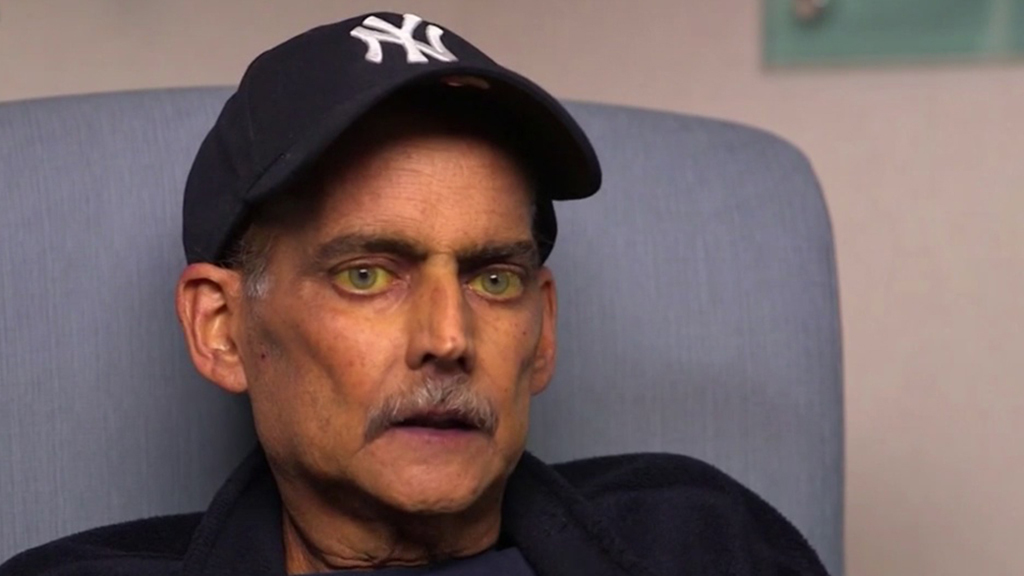
Former New York City police detective, and outspoken advocate for 9/11 responders, Luis Alvarez died Saturday at the age of 53, after a three-year battle with cancer. Alvarez, woked at Ground Zero after the 9/11 attacks and fought for the 9/11 Victim Compensation Fund. His death came weeks after he testified before Congress to urge lawmakers to extend the victim compensation fund that many first responders depend on to pay their medical bills.
Alvarez spoke before Congress, alongside other 9/11 responders and former “Daily Show” host Jon Stewart, urging lawmakers to extend healthcare protections for rescue workers like himself, who became sick after responding to the September 11, 2001, terror attacks in downtown Manhattan. Alvarez told Congress “ I did not want to be anywhere but Ground Zero. This fund is not a ticket to paradise. It is there to provide for our families when we can’t. Nothing more. You all said you would never forget. Well, I’m here to make sure that you don’t.”
Alvarez emphasized that future families stand not only to experience the stress of fighting these terrible illnesses but that their struggles would be compounded by the unconscionable financial burden of trying to fund their healthcare.” The House is expected to vote this month to permanently extend the September 11th Victim Compensation Fund, and Senate Majority Leader Mitch McConnell told a group of first responders last week the Senate would work to pass its authorization by August.
Alvarez was a toddler when his family moved to New York. He signed up for the Marines Corps when he was 18. He went on to join New York’s police department in 1990 and became a highly decorated officer, working undercover and on the bomb squad. After the 9/11 attacks, Alvarez spent 3 months at ground zero pulling people from the rubble and clearing away debris. He was diagnosed with cancer several years ago and underwent dozens of rounds of chemotherapy.
Alvarez, 53, a husband and father of three sons, died in hospice care surrounded by his family. He was remembered for his “tenacity and resilience” at a solemn and emotional funeral on Wednesday. After his cancer diagnoses, he showed “tenacity and resilience that even surprised his oncology team,” said his sister, Ida Lugo. “Nevertheless, chemo became his prison, his jail. Often isolating him from the world, too sick to engage. He wanted to urge our government to do the right thing,” Lugo said. “It became my brother’s dying wish, the legacy he wanted to leave that the bill protecting the Victim Compensation Fund be passed.”
Thousands came to honor the hero including family members, friends and uniformed officers, some of them in tears,. They stood at attention as two fire engines hoisted a huge American flag outside the Long Island funeral home where 53-year-old Luis Alvarez was remembered at a wake a day earlier. A hearse carrying the remains of the retired detective rolled slowly underneath it as the somber procession to the memorial service at Immaculate Conception Church in Astoria got underway.
As of Wednesday, 222 NYPD officers, including Luis Alvareaz, have died from 9/11 related illnesses. The bill to extend the Victim Compensation Fund passed a House committee in June and is awaiting a full House vote before it is taken up by the Senate.
Read more


 A patient in Illinois is believed to be the first death linked to vaping. Health officials said the patient died after contracting a severe respiratory illness, but did not give details about what the patient was vaping or which device was used. They did not provide details about the patient’s identity, saying only that the person was an adult who had vaped recently and then succumbed to a severe respiratory illness.
A patient in Illinois is believed to be the first death linked to vaping. Health officials said the patient died after contracting a severe respiratory illness, but did not give details about what the patient was vaping or which device was used. They did not provide details about the patient’s identity, saying only that the person was an adult who had vaped recently and then succumbed to a severe respiratory illness.








